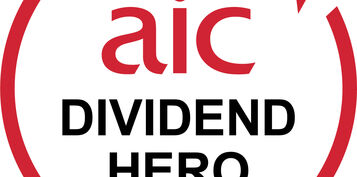Where to find high income with consistency
David Prosser on the dividend hero investment trusts.

The Association of Investment Companies’ periodic updates of its “dividend heroes” list always attract attention – and this week’s release was no exception. The list of funds that have increased their dividends in each and every year for at least the past 20 years now runs to 20 investment trusts, half of which have a track record of increases going back 50 years or more.
However, there was something else notable about this week’s update – the attractive yields on offer from many of these investment trusts. Six of the funds on the list currently offer a yield – the annual dividend expressed as a percentage of the current share price – in excess of 5%.
abrdn Equity Income, Athelney Trust, City of London, JP Morgan Claverhouse, Merchants Trust and Schroder Income Growth all beat this mark. And their yields certainly look very punchy compared to what’s available from savings accounts; currently, the top-performing cash ISAs pay just a touch over 5%.
You might assume that the dividend heroes always outperform in yield terms. However, the fact that an investment trust raises its dividend each year doesn’t necessarily mean that it will offer a particularly generous level of yield. The aim here is for consistently increasing income rather than market-beating rates; in any case, yields depend as much on the current share price as the size of the dividend paid.
“Right now, however, the yields on offer from many of these funds really do look very attractive. That’s partly a function of their outstanding performance on dividends, but also reflects the current valuations of many investment trusts.”
David Prosser
Right now, however, the yields on offer from many of these funds really do look very attractive. That’s partly a function of their outstanding performance on dividends, but also reflects the current valuations of many investment trusts. For example, shares in Schroder Income Growth, offering a yield of 5.24%, currently trade on a discount of around 12% to the value of the fund’s underlying assets.
Now, yields fluctuate over time, in line with changes in both the share price and the dividend payouts from a fund. But, if you buy into a trust yielding 5% today and it continues to increase its dividends at the rates seen in recent years, in ten years’ time you’ll effectively be earning an 8% yield on the value of your initial investment. Plus, you have the potential to benefit from capital growth over the same period.
Given that most economists expect UK interest rates to fall over the next year or so, this story looks even more compelling. Investors must be happy holding an investment that can fall in value as well as rise – not an issue with cash – but the income on offer here certainly provides plenty of compensation for risk.
In an individual savings account (ISA), moreover, all that dividend income is completely tax-free. That’s especially important because the government is cutting the dividend allowance – the amount of dividend income you can earn each year with no income tax to pay. In the current tax year, the allowance stands at £1,000, down from £2,000 in 2022-23. For the 2024-25 tax year, it will fall to just £500.
Remember, it’s the unique structure of an investment trust that provides the dividend heroes with the opportunity to raise their payouts year after year. Investment trusts, unlike any other type of collective fund, can hold back some of the dividend income they earn in their portfolios in good years; these reserves can then be used to top up payments to investors in years when the portfolio doesn’t generate so much.
Finally, it’s important to say that while these funds are often perceived as particularly attractive for income-focused investors, you also have the option of reinvesting your dividends. That makes them a potentially interesting option too for investors who are more interested in long-term growth.





